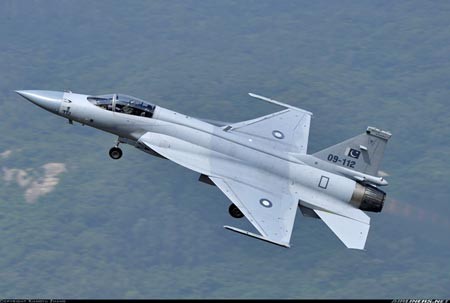A joint collaboration between China and Pakistan has led to the development of the JF-17 Thunder Multirole Combat Aircraft, which the former claims to be far more advanced than the United States’s F-16 fighter jet.
In a Want China Times (WCT) report, the Beijing-based Sina Military Network has stated that both countries have agreed to keep the technology behind the aircraft a secret, especially from India and the U.S.
Just recently, the Minhas No. 2 squadron of the Pakistan Air Force (PAF) acquired the FC-1, a Block II variation of the JF-17 from China. The new arsenal features improved avionics and software as well as a fixed air-to-air refueling probe.
Powered by a fuel-efficient Russian RD-93 afterburner turbofan and equipped with an aerodynamic design similar to the FA-18, the JF-17 is considered to be superior compared to second-generation fighters.
Although the RD-93 is far from being the latest technology--it was originally developed for the Soviet-era MiG-29 fighter--the engine is stable and reliable. Flight complications or problems have not surfaced after more than 7,000 hours of use, according to Khalid Mahmood, head of the JF-17 sales and marketing team.
The WCT report further added that Chinese scientists are still looking for ways to improve the aircraft's performance, with a special focus on introducing lightweight material. Designers are currently trying to pair the RD-93 with a divergent supersonic air intake which is said to be much lighter and improves the jet's stealth capabilities.
Recent photos of the JF-17 show that it is capable of carrying two CM-400AKG high-speed air-to-air missiles.
Mahmood added that the aircraft is flexible when it comes to accommodating almost any weapon in its weapon compartments.






















